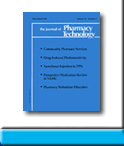 |
 |
Effects of Smartphones on Pharmacist-Physician Clinical Communication
Charlene Wilson, Robert Wu, Vivian Lo, Gary G Wong, Olavo A Fernandes, George Tomlinson, and Claudia Summa-Sorgini
To request full article click here.
Background: Clinical pharmacist interventions are associated with improved patient outcomes and cost savings. Expanded interprofessional communication strategies may improve the efficiency and quality of the communication of these interventions.
Objective: To determine the impact of smartphone device use on pharmacists’ efficiency when communicating clinical interventions and to determine factors related to smartphone use that improve and impede communication.
Methods: A prospective, 2-phase, observational study was completed. In phase 1, work shadowing observations involved general internal medicine (GIM) pharmacists who communicated interventions to a physician’s smartphone (BlackBerry device) and multiorgan transplant (MOT) pharmacists who used traditional modes of communication (paging, phone call, face-to-face). On each ward, various aspects of the interventions were documented for a total of 20 hours. In phase 2, 10 interviews were conducted with GIM pharmacists and physicians to gain their perspectives on BlackBerry device communication.
Results: In phase 1, no significant difference was found in median time to resolution (order change or drug information response given) between accepted interventions from the smartphone group (15.5 minutes) versus traditional modes of communication in the GIM group (4 minutes) and the MOT group (8.5 minutes) (p = 0.74). In phase 2, themes that emerged across the different clinical groups included perceived improvements in communication processes (efficiency, decreased wait times, and triaging of issues), concerns for potential miscommunication (use of tone in the emails), and recommendations regarding BlackBerry best practices (dealing with urgent/nonurgent issues and establishment of pharmacist-physician interprofessional relationships).
CONCLUSIONS: Despite no significant difference in median time to resolution of pharmacists’ interventions communicated through physician BlackBerry devices compared to traditional modes, the majority of interviewees perceived this device to be a positive communication tool resulting in improved efficiency of team communication.
J Pharm Technol 2012;28:234-42
To request full article click here.
|
|
|
||
|

